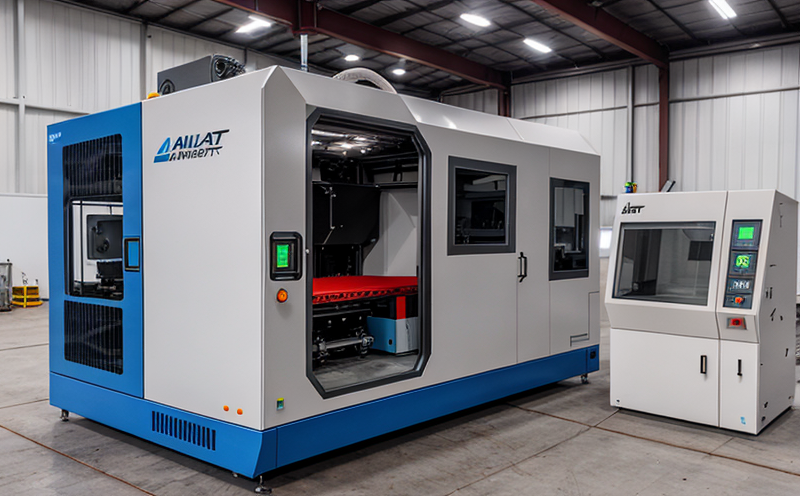ISO 52911 Post Processing Testing in Additive Manufacturing
The ISO 52911 standard is designed to ensure that post-processing steps are correctly applied during the additive manufacturing (AM) process, resulting in a final product with the desired mechanical and chemical properties. This service focuses on testing these post-process activities to guarantee quality and compliance.
Post-processing of AM parts involves several crucial steps including but not limited to heat treatment, chemical treatments, cryogenic cooling, and coating processes. These procedures are essential for enhancing part performance in terms of strength, durability, and compatibility with specific end-use applications. ISO 52911 provides a structured approach to ensure that these post-processing methods meet the required specifications.
The testing process under this standard involves detailed inspection techniques such as visual examination, dimensional analysis using coordinate measuring machines (CMM), hardness tests, mechanical property evaluations like tensile and impact strength tests. Additionally, surface finish assessments are conducted via profilometers to ensure that the post-processing has not adversely affected these critical characteristics.
The scope of this service extends beyond mere compliance checks; it also includes providing recommendations for improvement based on test results. Our team works closely with our clients to interpret data and suggest adjustments where necessary, ensuring continuous quality enhancement within their manufacturing processes.
In addition to the technical aspects mentioned above, we offer comprehensive documentation services which include detailed reports outlining all testing procedures performed as well as findings from these tests. These documents serve multiple purposes including internal quality control records, supplier evaluation materials, and regulatory submissions where applicable.
- Visual examination
- Dimensional analysis using CMMs
- Hardness testing
- Mechanical property evaluations (tensile and impact strength tests)
- Surface finish assessments via profilometers
Scope and Methodology
The scope of ISO 52911 post-processing testing encompasses a wide range of additive manufacturing processes, ensuring that each step in the production cycle adheres strictly to international standards. This includes not only traditional AM technologies such as laser powder bed fusion (LPBF), electron beam melting (EBM), but also newer methods like direct metal laser sintering (DMLS) and selective laser melting (SLM).
The methodology employed during these tests follows a structured approach, starting with careful selection of samples representative of the production batch. Samples are then subjected to various inspections using advanced equipment tailored specifically for AM applications.
For instance, when evaluating heat treatments, we use specialized furnaces capable of simulating industrial conditions accurately. Similarly, for cryogenic cooling processes, our facilities feature state-of-the-art cooling chambers able to maintain extremely low temperatures over extended periods. Each test is meticulously documented, ensuring traceability throughout the entire process.
Our team applies ISO 52911 alongside other relevant international standards such as ASTM F42 and EN 374, which provide additional depth where necessary. Compliance with these guidelines ensures that our services meet high industry expectations while maintaining consistency across different environments worldwide.
Industry Applications
The application of ISO 52911 post-processing testing is particularly relevant in sectors where precision and reliability are paramount, such as aerospace, automotive, healthcare, and defense industries. In these fields, parts produced through AM technology must withstand rigorous performance demands while maintaining their structural integrity.
For example, in the aerospace sector, lightweight yet robust components fabricated via additive manufacturing need to endure extreme temperatures and stresses during flight operations. Through comprehensive post-processing testing according to ISO 52911, manufacturers can verify that these parts meet stringent safety requirements without compromising on performance.
In automotive applications, AM allows for the creation of complex geometries that enhance fuel efficiency and reduce weight. Post-processing tests ensure that these innovations do not compromise critical mechanical properties such as fatigue resistance or wear characteristics.
Within healthcare, additive manufacturing enables the production of customized prosthetics tailored precisely to individual patient needs. ISO 52911 testing guarantees that these devices are safe and effective for use in clinical settings by validating their biocompatibility and strength.
International Acceptance and Recognition
- The United States: ISO 52911 is widely recognized across various federal agencies including NASA, Department of Defense (DoD), National Institute of Standards and Technology (NIST).
- European Union: This standard has been adopted by several EU member states for quality assurance purposes in manufacturing.
- Asia-Pacific Region: Major economies like Japan, South Korea, Australia have incorporated ISO 52911 into their national standards frameworks.
The international acceptance of this standard reflects its significance within the global AM community. It provides a consistent framework that enhances trust among stakeholders involved in additive manufacturing projects globally.
By adhering to these internationally recognized guidelines, companies can ensure they are meeting not only local but also global expectations regarding product quality and safety standards.





